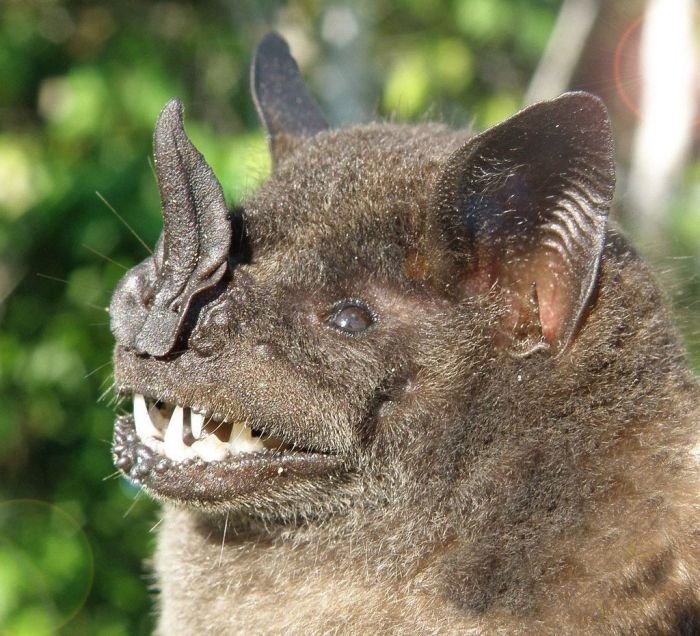|
|
Wild Bats, Peru
|
• 2. High Duty Cycle Echolocation: Bats emit a continuous call and separate pulse and echo in frequency. The ears of these bats are sharply tuned to a specific frequency range. They emit calls outside of this range to avoid self-deafening. They then receive echoes back at the finely tuned frequency range by taking advantage of the Doppler shift of their motion in flight. The Doppler shift of the returning echos yield information relating to the motion and location of the bat's prey. These bats must deal with changes in the Doppler shift due to changes in their flight speed. They have adapted to change their pulse emission frequency in relation to their flight speed so echoes still return in the optimal hearing range.
The new Yinpterochiroptera and Yangochiroptera classification of bats that are supported by molecular evidence, suggest two possibilities for the evolution of echolocation. It may have been gained once in a common ancestor of all bats and was then subsequently lost in the Old World fruit bats, only to be regained in the Horse-Shoe bats; or echolocation was evolved independent in both the Yinpterochiroptera and Yangochirpotera lineages.
Two groups of moths exploit a bat sense to echolocate: tiger moths produce ultrasonic signals to warn the bats that they (the moths) are chemically protected or aposematic. This was once thought to be the biological equivalent of "radar jamming", but this theory has yet to be confirmed. The moths Noctuidae have a hearing organ called a tympanum, which responds to an incoming bat signal by causing the moth's flight muscles to twitch erratically, sending the moth into random evasive manoeuvres.
|
|









